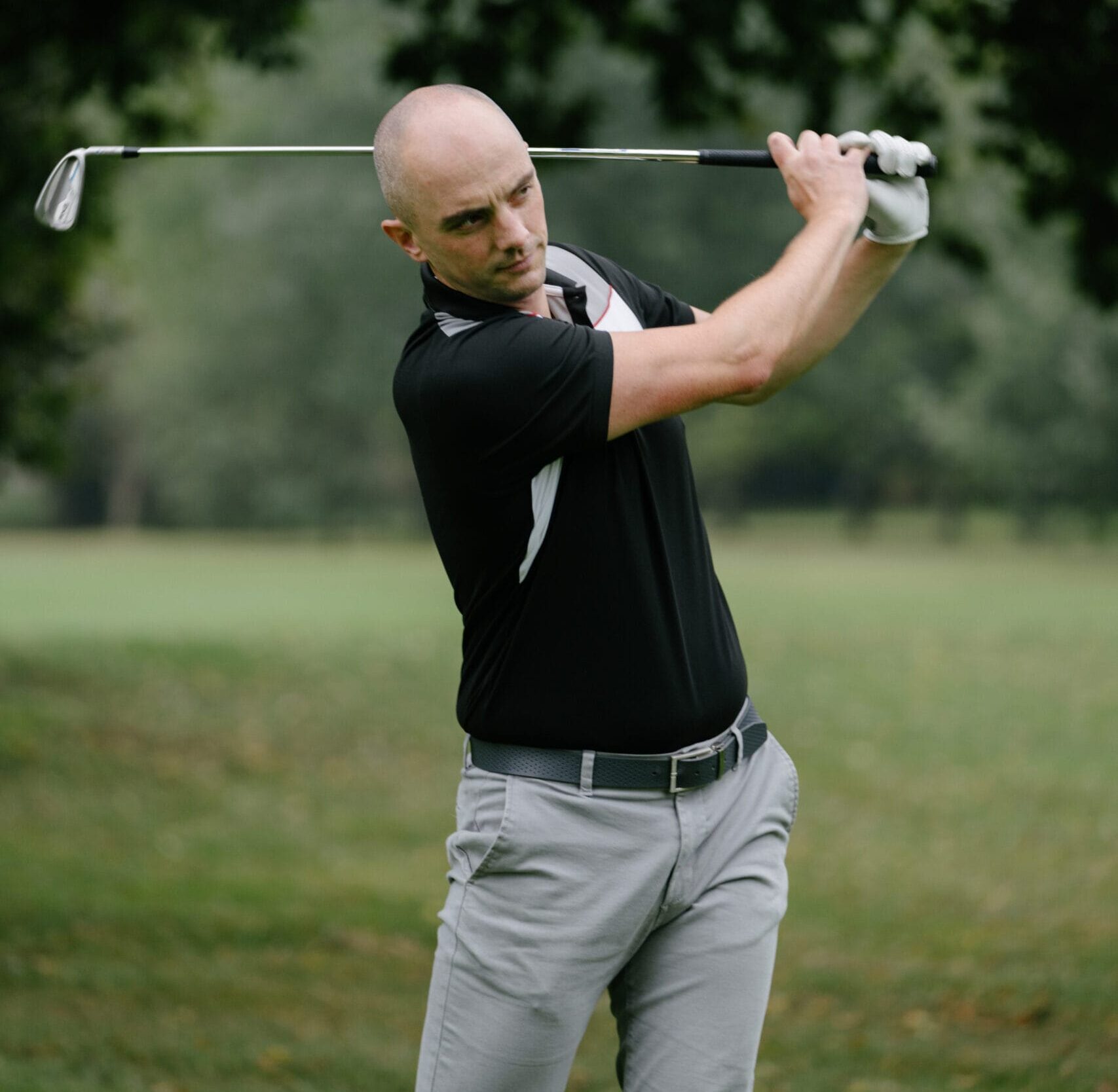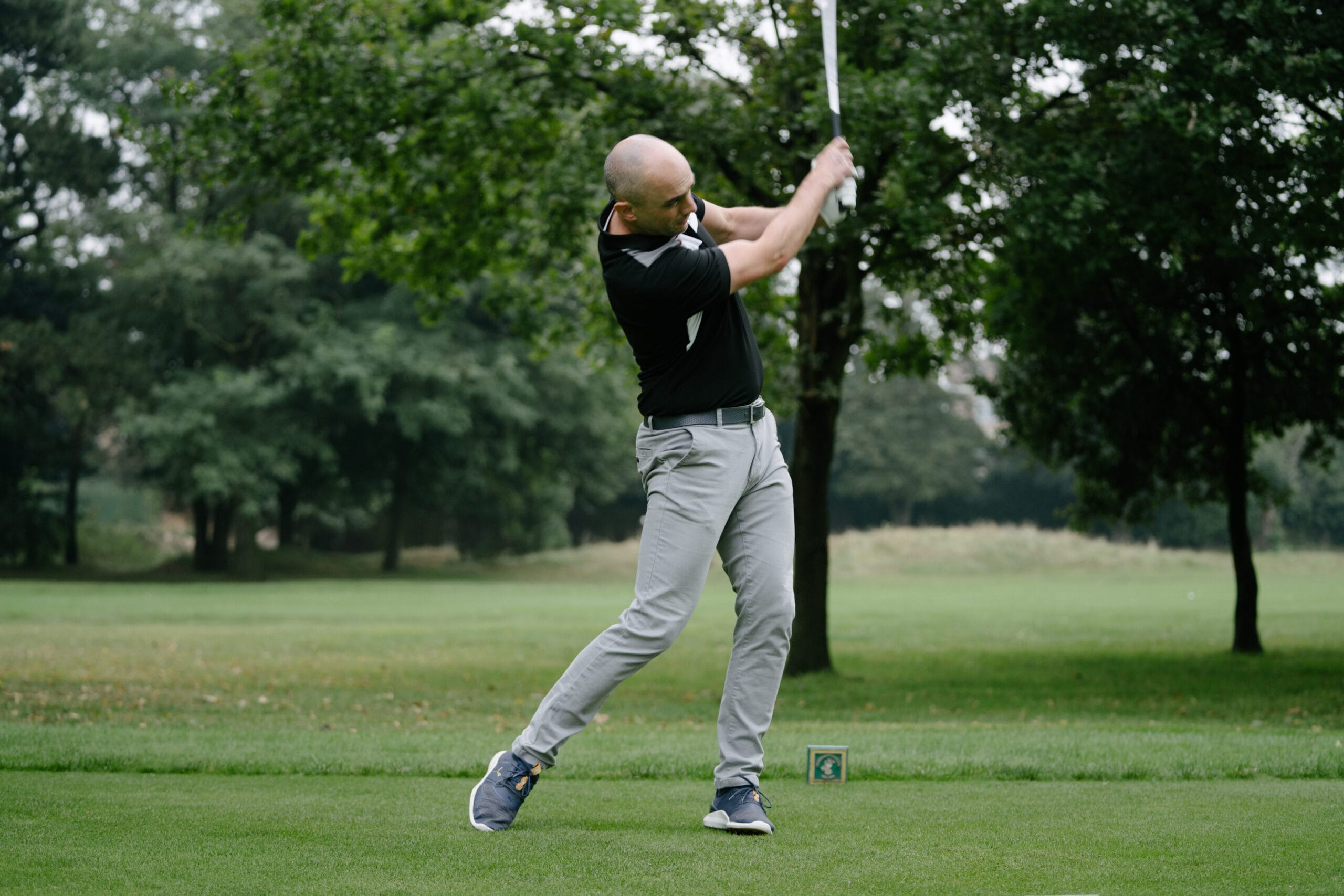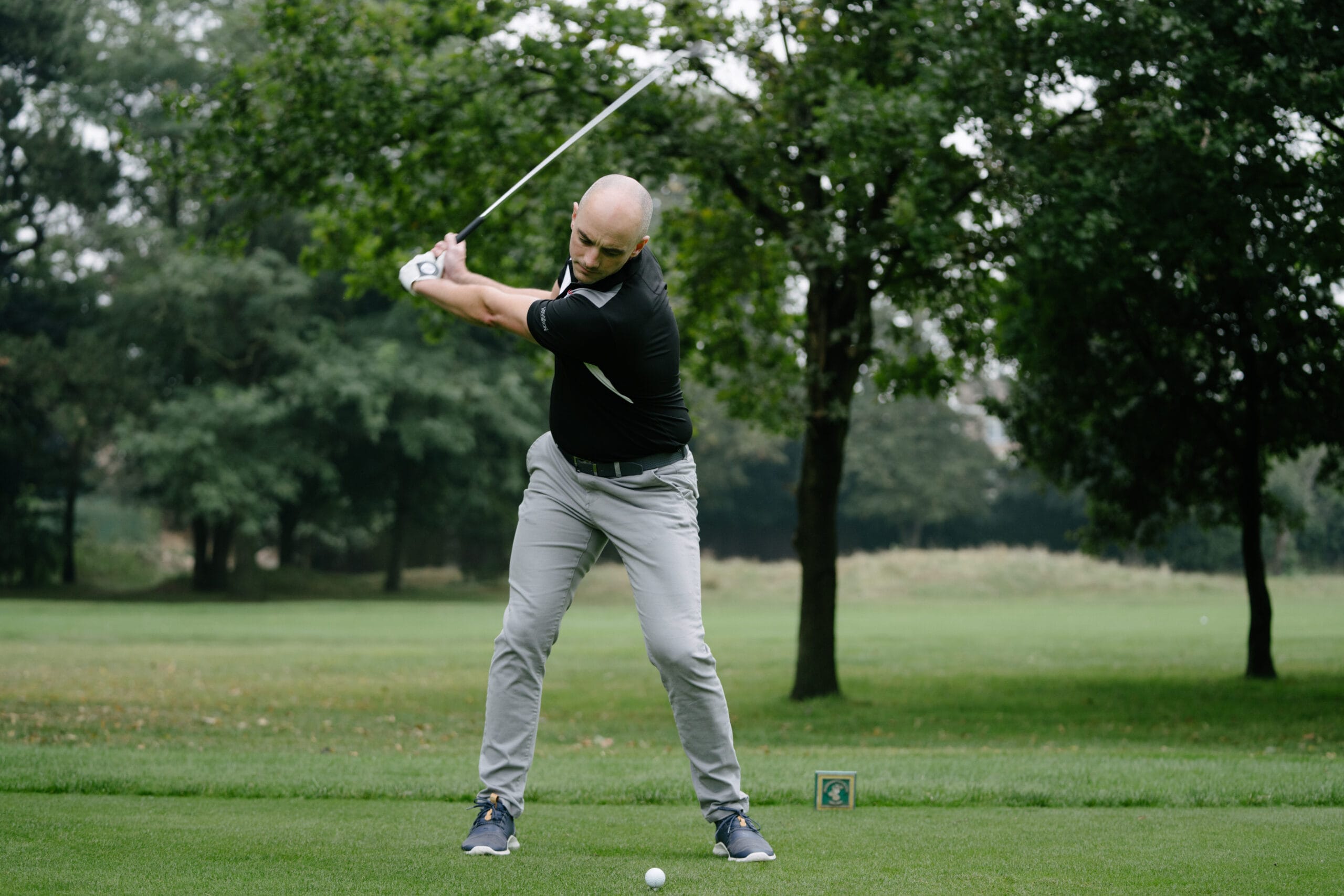3 Exercises to Improve Your Golf Swing

Pure Sports Medicine
- 21 September, 2018
- Golf
- 3 min read
For many years golf was not a sport affiliated with a strict gym routine or a specific warm up. In more recent years pro golfers have dedicated more time to specific warm-up, strength, conditioning and improving their movement. In a recent study golfers using banded resistance warm up were able to hit the ball longer.

With that in mind here are three examples of great warm-up drills to help you perform better.
Hip hinge: move from the hip pushing back against the band.
Pallof bridge: keep static tension on the band as you lift and lower your hips.
Rotational bend over row: tried to keep the lower body still and rotate quickly to encourage power development.
It’s also important acknowledge that golf also requires lots of practice, coaching, skill, concentration and sometimes specific club fitting. Every golfer will have their individual strengths and weaknesses. A common theme is that pro golfers suffer more with overload related symptoms and amateurs developed injuries related to swing mechanics. However, Its fair to say the way you perform over 18 holes is a multi-faceted affair!
The Potential Benefits of Working on Your Physical Abilities
- Developing a robustness to deal with the demands of the game on the body. This can promote the reduction of overload related injuries and increase longevity in the game.
- Increase ball velocity and distance.
- Developing mobility and stability to maintain your dynamic golf posture from set up until follow through. Loss of golf posture is a common cause of low back pain in golf.
- Minimise swing modifications based around physical limitations which could promote more consistency and accuracy in your game.
- Reduce fatigue on the back.
- You may be good but could you be better?! Sometimes the difference between winning and losing is marginal.
In recent years warm-ups have been under the spotlight. In other sports such as football and rugby there has been a movement towards pre-activation of muscles, functional mobility drills and working the body in multiple directions. Passive stretching routines have little evidence to support the use within warm-ups to reduce injury or improve performance. A TPI study found when comparing 3 warm ups (stretching, dynamic stretching or resistance band drills) that the group using a banded resistance warm up were able to hit the ball longer.
Using a physical golf screen is one method to establish some baseline information about your body. I accept that there many swing styles, however, pro-golfers have similar movement sequence despite a range in style. It is important that you can transfer force from the lower body to upper body to develop decent power and accuracy in the golf swing. In the physiotherapy and performance world, we call this the ‘kinetic chain’. If you unable to do this efficiently then you could be losing power, modifying your swing and placing unnecessary load on areas such as the upper limb as it plays ‘catch up’. If your coach is getting you to work on a specific skill but they feel your body is letting you down you may benefit from seeing a physiotherapist to assess your movement, flexibility and strength. If you have pain or an injury then getting a thorough musculoskeletal assessment with a medical professional is the first step. Seeing a therapist who understands the movement patterns in golf can help match your rehabilitation to the demands of the game and your physical ability. Common findings include lack of rotation in the hip and upper torso, however, this could be due stiffness, lack of coordination or muscle control which is why an individual assessment is beneficial.
Overall most sports benefit from working on your physical capacity and mobility. I feel golf is no different. A lot of injuries we see in clinic are related to overload or too much too soon. Therefore it is important to build up gradually. This could be monitoring the number of balls you hit on the golf range or if you just starting up golf perhaps starting with 9 holes for a few weeks.
My 3 Tips to Aid Injury Reduction and Improve Performance
- Improve general health with exercise, good recovery, relaxation and good nutrition (get the basics sorted).
- Consider getting advice from both golf coach and a therapist. A Team approach! Seeing a Strength and conditioning coach can also be extremely beneficial.
- Having a physical golf screen to see what areas you may benefit from addressing.
While all of the above will help we have to accept golf is a challenging game and we all have good and bad days. As Gary Player said, “the harder you work, the luckier you get.”

Advice
Over the last 20+ years our experts have helped more than 100,000 patients, but we don’t stop there. We also like to share our knowledge and insight to help people lead healthier lives, and here you will find our extensive library of advice on a variety of topics to help you do the same.
OUR ADVICE HUBS See all Advice Hubs
